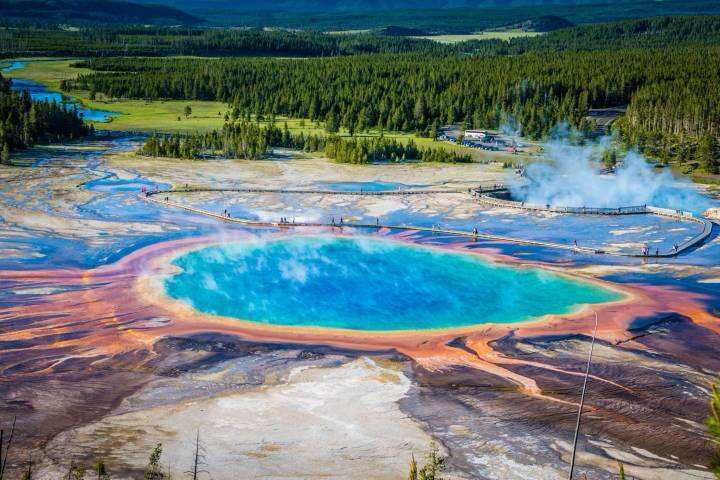Imagine a pile of TNT about the size of Rhode Island and reaching eight miles into the sky, to about the height of the highest cirrus clouds, and you have some idea of what visitors to Yellowstone are shuffling around on top of. The pressure that such a pool of magma exerts on the crust above has lifted Yellowstone and about three hundred miles of surrounding territory about 1,700 feet higher than they would otherwise be. If it blew, the cataclysm is pretty well beyond imagining. According to Professor Bill McGuire of University College London, "you wouldn't be able to get within a thousand kilometers of it" while it was erupting. The consequences that followed would be even worse.

Superplumes of the type on which Yellowstone sits are rather like martini glasses—thin on the way up, but spreading out as they near the surface to create vast bowls of unstable magma. Some of these bowls can be up to 1,200 miles across. According to theories, they don't always erupt explosively but sometimes burst forth in a vast, continuous outpouring—a flood—of molten rock, such as with the Deccan Traps in India sixty-five million years ago. These covered an area of 200,000 square miles and probably contributed to the demise of the dinosaurs—they certainly didn't help—with their noxious outgassings. Superplumes may also be responsible for the rifts that cause continents to break up.












